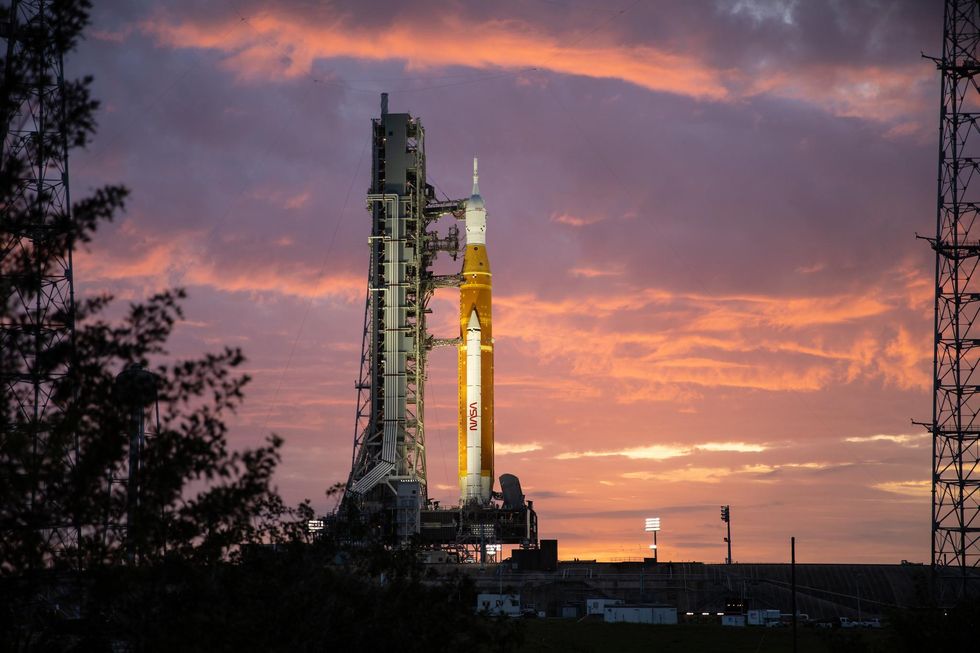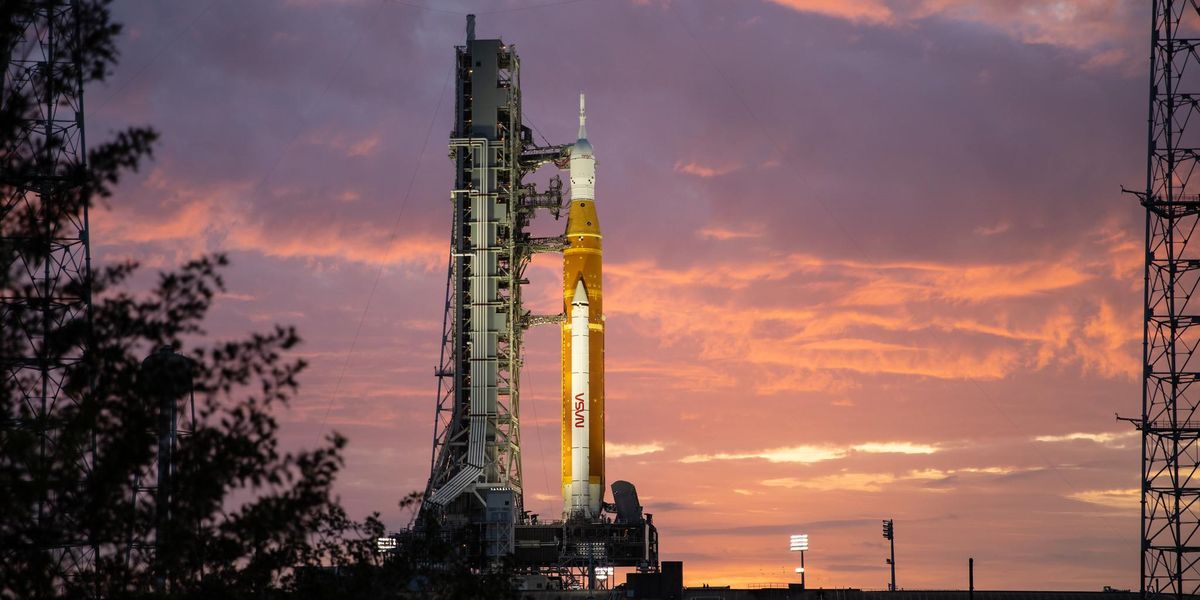
“Whenever you have a look at the rocket, it appears nearly retro,” stated Invoice Nelson, the administrator of NASA. “Seems like we’re trying again towards the Saturn V. But it surely’s a very totally different, new, extremely refined–extra refined–rocket, and spacecraft.”
Artemis, powered by the House Launch System rocket, is America’s first try and ship astronauts to the moon since Apollo 17 in 1972, and expertise has taken large leaps since then. On Artemis I, the primary take a look at flight, mission managers say they’re taking the SLS, with its uncrewed Orion spacecraft up prime, and “stressing it past what it’s designed for”—the higher to make sure secure flights when astronauts make their first landings, at the moment focused to start with Artemis III in 2025.
However Nelson is true: The rocket is retro in some ways, borrowing closely from the area shuttles America flew for 30 years, and from the Apollo-Saturn V.
A lot of Artemis’ {hardware} is refurbished: Its 4 foremost engines, and elements of its two strap-on boosters, all flew earlier than on shuttle missions. The rocket’s apricot coloration comes from spray-on insulation very like the froth on the shuttle’s exterior tank. And the massive maneuvering engine in Orion’s service module is definitely 40 years previous—used on 19 area shuttle flights between 1984 and 1992.
“I’ve a reputation for missions that use an excessive amount of new expertise—failures.”
—John Casani, NASA
Maybe extra importantly, the mission inherits fundamental engineering from half a century of spaceflight. Simply have a look at Orion’s crew capsule—a truncated cone, considerably bigger than the Apollo Command Module however conceptually very comparable.
Previous, after all, doesn’t imply unhealthy. NASA says there is no such thing as a have to reinvent issues engineers obtained proper the primary time.
“There are particular elementary points of deep area exploration which might be actually unbiased of cash,” says Jim Geffre, Orion Automobile Integration Supervisor on the Johnson House Heart in Houston. “The legal guidelines of physics haven’t modified for the reason that Nineteen Sixties. And capsule shapes occur to be actually good for coming again into the ambiance at Mach 32.”
Roger Launius, who served as NASA’s chief historian from 1990 to 2002 and as a curator on the Smithsonian Establishment from then till 2017, tells of a dialog he had with John Casani, a veteran NASA engineer who managed the Voyager, Galileo and Cassini probes to the outer planets.
“I’ve a reputation for missions that use an excessive amount of new expertise,” he recollects Casani saying. “Failures.”
The Artemis I flight is slated for about six weeks. (Apollo 11 lasted eight days.) The ship roughly follows Apollo’s path to the moon’s neighborhood, however then places itself in what NASA calls a distant retrograde orbit. It swoops inside 110 km of the lunar floor for a gravity help, then heads 64,000 km out—taking greater than a month however utilizing much less gasoline than it will in nearer orbits. Lastly, it comes dwelling, reentering the Earth’s ambiance at 11 km per second, slowing itself with a heatshield and parachutes, and splashing down within the Pacific not removed from San Diego.
If all 4, quadruply-redundant flight laptop modules fail, there’s a fifth, fully separate laptop onboard, operating totally different code to get the spacecraft dwelling.
“That additional time in area,” says Geffre, “permits us to function the techniques, give extra time in deep area, and all these issues that stress it, like radiation and micrometeoroids, thermal environments.”
There are, after all, newer applied sciences on board. Orion is managed by two car administration computer systems, every comprised of two flight laptop modules (FCMs) to deal with steering, navigation, propulsion, communications and different techniques. The flight management system, Geffre factors out, is quad-redundant; if at any level one of many 4 FCMs disagrees with the others, it can take itself offline and, in a 22-second course of, reset itself to verify its outputs are in line with the others’. If all 4 FCMs fail, there’s a fifth, fully separate laptop operating totally different code to get the spacecraft dwelling.
Steering and navigation, too, have superior for the reason that sextant used on Apollo. Orion makes use of a star tracker to find out its perspective, imaging stars and evaluating them to an onboard database. And an optical navigation digital camera shoots the Earth and moon in order that steering software program can decide their distance and place and hold the spacecraft on track. NASA says it’s there as backup, in a position to get Orion to a secure splashdown even when all communication with Earth has been misplaced.
However even these techniques aren’t fully new. Geffre factors out that the steering system’s structure is derived from the Boeing 787. Computing energy in deep area is restricted by cosmic radiation, which might corrupt the output of microprocessors past the safety of Earth’s ambiance and magnetic area.
Past that’s the inevitable situation of value. Artemis is a big mission, years delayed, began lengthy earlier than NASA started to purchase different launches from firms like SpaceX and Rocket Lab. NASA’s inspector normal, Paul Martin, testified to Congressin March that the primary 4 Artemis missions would value US $4.1 billion every – “a price ticket that strikes us as unsustainable.”
Launius, for one, rejects the argument that authorities is inherently wasteful. “Sure, NASA’s had issues in managing packages prior to now. Who hasn’t?” he says. He factors out that Blue Origin and SpaceX have had loads of setbacks of their very own – they’re simply not obliged to be public about them. “I might go on and on. It’s not a authorities factor per se and it’s not a NASA factor per se.”
So why return to the moon with – please forgive the pun – such a retro rocket? Partly, say those that watch Artemis carefully, as a result of it’s grow to be too large to fail, with a lot American cash and brainpower invested in it. Partly as a result of it turns NASA’s astronauts outward once more, exploring as an alternative of sustaining an area station. Partly as a result of new views might come of it. And partly as a result of China and Russia have ambitions in area that threaten America’s.
“Apollo was an indication of technological verisimilitude – to the entire world,” says Launius. “And the entire world knew then, as they know as we speak, that the longer term belongs to the civilization that may grasp science and expertise.”
From Your Web site Articles
Associated Articles Across the Internet

